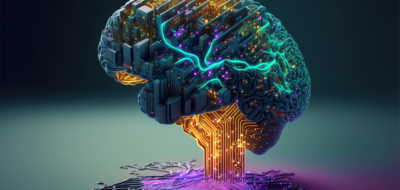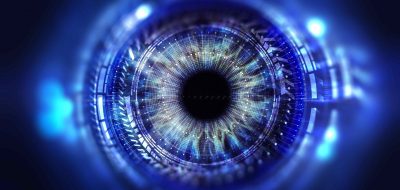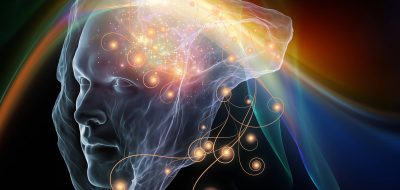My article in BUSINESS INSIDER published 16thof April 2018.
The times when the head of a company was the ultimate, uncontested authority are gone forever. The world in which she or he operates has become too complex, too dynamic. Instead, every day, those at the helm of organizations can expect to encounter volatile markets, demanding employees, fickle customers, impatient investors and bloggers and journalists who traffic in unrelenting skepticism. In this environment, it can be difficult for a leader to hold a steady course, guided by what he or she knows is right for the long run, as opposed to what’s expedient in the short term. And it’s especially hard to make the quick decisions organizations need without a robust mechanism for choosing between what’s right and what’s wrong.
As the leader of a group of people, I wrestle with this. I know I have only have a very short time to sell a new idea or a business concept to my team and get its buy-in. To succeed, I must be guided by a system of values that is crystal clear, especially to me. And, most importantly, I must set an example through my actions rather than merely proclaiming a list of the organization’s values in the company newsletter. I need to live the values in my own practice as I lead others.
Dollars and sense
There are some basic questions that all leaders should ask themselves and find answers for as soon as possible. The way I see it, answering such questions frees me from the dilemmas that interfere with my decision making. One of these questions concerns the extent to which charismatic leaders – those who influences others through the vitality of their personalities and the excellence of their communication skills – can allow themselves to manipulate people. While leading the charge, and inspiring people to follow, how can one remain critical of one’s own thought processes and actions and keep one’s ego in check?
Along with very personal questions like that, every leader faces business dilemmas, many of them ethical, every day. Should they cut costs (with the best interest of their companies and employees in mind) and use the cheapest available workforce without concern for the livelihoods of their subcontractors? Should they develop future technologies knowing there may be unintended and negative consequences for many people by doing so? Should they fill orders for items which they know will contribute to surveilling people? In adopting new tools that boost efficiency (automation and robotization), should they forget about those employees that will lose their jobs to robots, not to mention workers at other companies?
The market of ethical dilemmas for leaders is always growing. Whereas it is relatively easy to set KPIs (key performance indicators) that will demonstrate that an organization is operating efficiently, effectively and profitably, and meeting all its targets, it is far more challenging to determine whether the path taken to achieve these goals is morally justified. I am confident that all good leaders would agree they are engaged in a constant balancing act between what is necessary to protect their organization’s interests and what needs to be done to uphold their personal value systems. There are no KPIs to tell right from wrong. Accordingly, I believe it is a good idea to maintain a personal ethical compass, a private code of the principles and values one wishes to live by. Such a code will serve as a guideline that can be applied whenever one is confronted with moral ambiguity, allowing one to maintain both personal and organizational integrity (as the two are entwined) and steer clear of the traps laid by rapid change that can lure one into decision-making by mere expediency. Although such code of ethics will not eliminate the difficulty of decision-making, it will certainly make it easier. It will enable us reach coherent decisions based on a clear value system, allowing the organization to be consistent and base its growth on a sound, ethical foundation. The leader of such an organization can create an environment that supports its employees, appreciates them as people (thereby getting their best ideas and work), while building a brand that consumers and clients perceive as authentic, one whose aspirations go beyond merely maximizing profits. And this makes good business sense.
Read more in the full article.
Link to the full article (in Polish)
Related articles:
– A machine will not hug you … but it may listen and offer advice
– Surviving in the digital age, future-proofing your business
– Fall of the hierarchy. Who really rules in your company?
– A hidden social networks lurks within your company. Find it!
– Your clients are already in the future, and where are you?










Tom Jonezz
The most essential thing that our society must do as these technologies advance is to have an open conversation about where we want humanity to go as a species. These technologies are being rapidly developed with no signs of slowing down, so it is up to us to decide how far down this road we want transhumanism to go. Unless we do, the transhuman future we will get may not necessarily be the one that we want.
Simon GEE
Good suff. Nic read. At least the first part 🙂 Could someone just explain the difference between a decision tree rule system and a Nueral Net? 😂
Norbert Biedrzycki
The difference is vast. Rule-based systems are examples of “old style” AI, which uses rules prepared by humans. Neural networks are examples of “new style” AI, whose mechanism is “learned” by the computer using sophisticated algorithms, and as a result, we humans don’t really understand why it works. While in some cases rule-based systems could be effective, the general trend in AI has been to switch to machine-learning algorithms such as neural networks, due to their much better performance.
Rule-based systems and Artificial Neural Networks are just some of the different algorithms/models that are being used. Other popular approaches are Support Vector Machines, decision trees, ensemble methods, probabilistic graphical models, and there are many others.
Oscar2
Taking into consideration that AI solutions (ie neural networks, genetic algorithms, machine learning, etc.) can be represented using computer programs (written in C, Java, etc.). Computer programs to be started on the computer have to be translated to the machine code where the main control instructions are simple conditional instructions and jump instructions, so we can say that “AI is nothing but a bunch of “if…else” statements”… 🙂